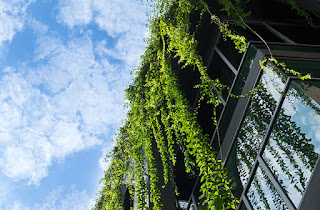Is Sustainable Realistic?
In looking at the reading by Abalos regarding sustainability and the aesthetics of practice, it got me thinking about architecture curricula in general. Why does it seem that our theoretical design projects often have a forced implementation of a sustainable practice, resource, or material, no matter if it coincides (or not) with a project's concept? If "green" buildings are really going to improve the environment, I think we need to be more intentional about researching this topic especially early on in school, when we have the most creative freedom. Aesthetics can come in varied forms, and so can sustainability, so why not invest time in designing spaces that implement both in a strong way? This is a newer topic in architecture school even in the last 20 years, which I think is all the more reason to learn about it and use real strategies and construction practices that help, rather than harm, the environment. Even those who pursue a sustainability minor may not end up using this knowledge, and instead go with the flow of their firm's typical design process... so is there a way to emphasize sustainability realistically - both in practice and in schools? Is this process going to remain in space as a "good idea" without fully coming to fruition, or can it be acted upon successfully in this new generation of architects? Will there ever be better solutions than using local/clean resources or adding plenty of green space, as our education suggests?


Comments
Post a Comment